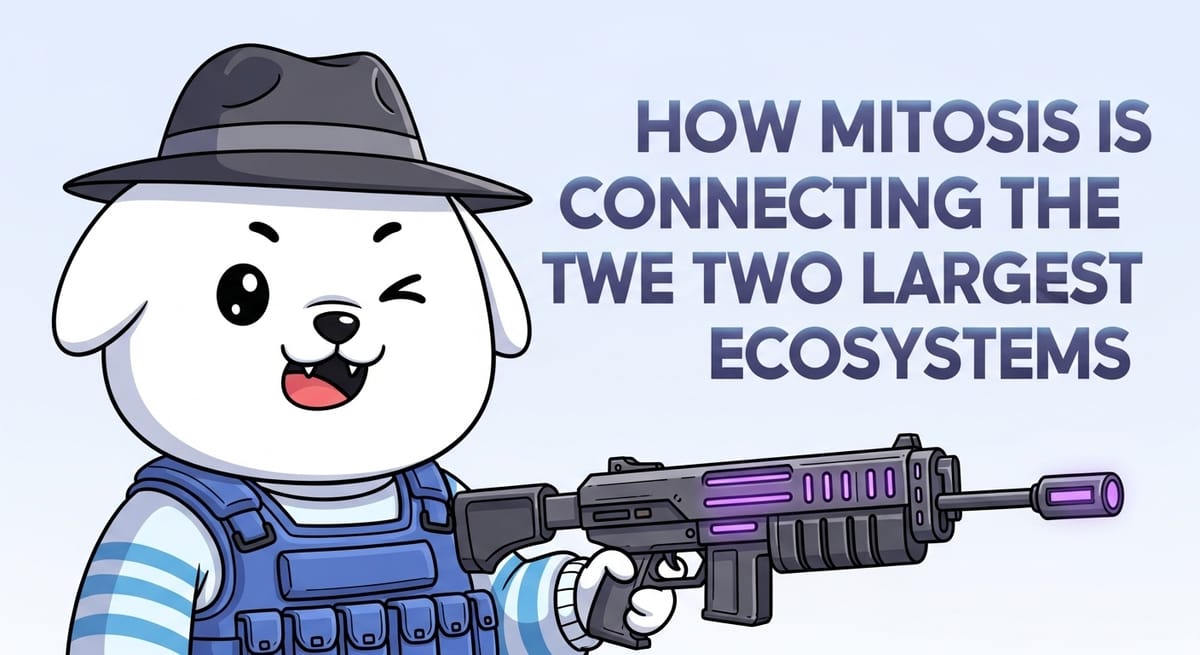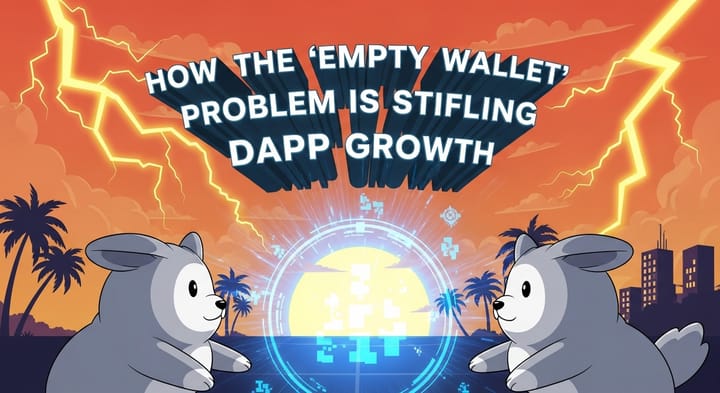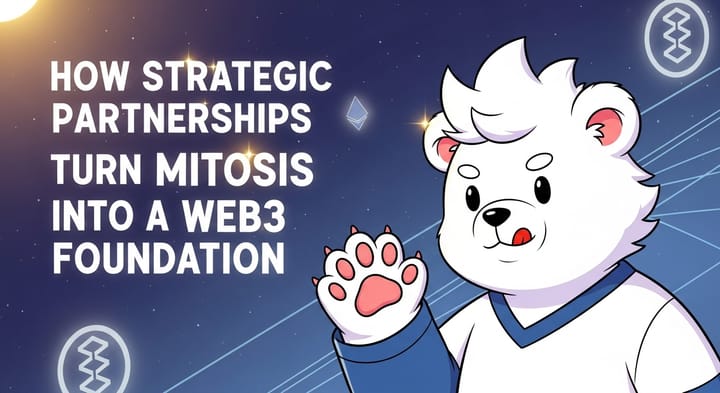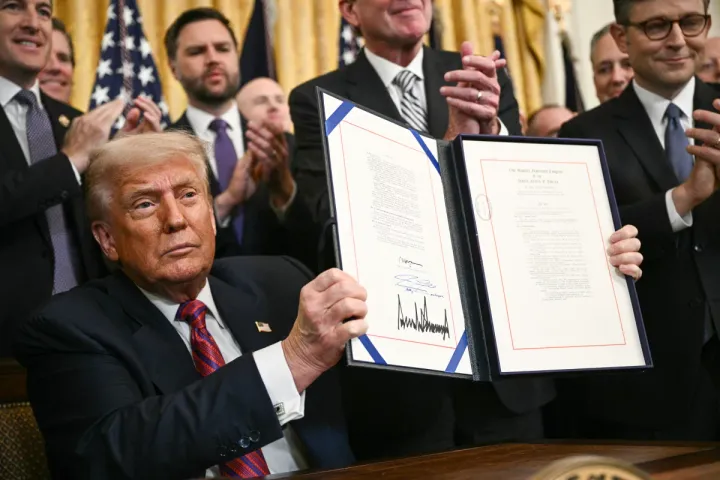Bitcoin DeFi: How Mitosis is Connecting the Two Largest Crypto Ecosystems

1. Introduction: The Bitcoin Renaissance and the Thirst for Utility
In recent years, we have witnessed a true renaissance of Bitcoin. It has ceased to be merely "digital gold" and a passive store of value. Thanks to innovations like Ordinals, BRC-20, and growing interest following the halving, an insatiable thirst for utility has awakened in the Bitcoin ecosystem. BTC holders are increasingly asking, "How can I make my bitcoins work, rather than just sit in my wallet?"
The answer to this question has been the emergence of a new generation of Layer 2 (L2) solutions for Bitcoin. Projects like Stacks, Merlin Chain, Rootstock, and many others aim to solve the main problem of native Bitcoin – its limited smart contract capabilities. They create environments where full-fledged DeFi protocols, GameFi applications, and NFT marketplaces can be built, leveraging the security of the main Bitcoin network.
This opens up an exciting new frontier – Bitcoin DeFi (BTCFi). The potential is enormous: trillions of dollars in capital locked in BTC could be unlocked and integrated into the decentralized economy.
The Great Bitcoin Divide: Two Key Liquidity Problems
However, despite all the enthusiasm, the new world of Bitcoin L2s faces two fundamental problems that hinder its growth:
- The "On-Ramp" Problem: How to Securely Bridge BTC? How can users securely and decentrally move their native BTC from the main Bitcoin network to these new L2 environments? Existing solutions are often either centralized (requiring trust in a custodian) or complex and not sufficiently scalable.
- The "Liquidity Desert" Problem: What to Trade Besides BTC? Even if you successfully move your BTC to an L2, it's not enough for a full-fledged DeFi ecosystem. You need stablecoins (USDC, USDT) for lending and stable trading pairs. You need other popular assets (ETH, LSTs/LRTs) for diversification and complex strategies. At launch, new Bitcoin L2s are "liquidity deserts" with nothing but variations of BTC.
These two problems create the "Great Bitcoin Divide" between the immense capital of Bitcoin and the thriving, liquid DeFi ecosystem built around Ethereum and EVM-compatible chains.
Mitosis: A Two-Way Bridge for the Bitcoin Economy
It is precisely to connect these two worlds that a protocol like Mitosis is needed. Mitosis, with its focus on the secure and efficient movement of liquidity, can become the very two-way bridge that will fuel the new Bitcoin DeFi economy.
How can Mitosis solve these problems?
- "Importing" Liquidity from the EVM World: Mitosis can provide a secure and efficient channel to "import" critically important assets like stablecoins (USDC, USDT) and LSTs/LRTs from Ethereum, Arbitrum, Polygon, and other EVM chains into the new Bitcoin L2s. This would "irrigate the liquidity desert" and create the conditions for launching full-fledged DEXs, lending protocols, and other DeFi services.
- "Exporting" Liquidity from the Bitcoin World: On the other hand, Mitosis can allow users to "export" tokenized versions of BTC (e.g., wBTC or other variations created on L2s) from the Bitcoin ecosystem to the EVM world. This unlocks BTC liquidity for use in the thousands of existing and proven DeFi applications on Ethereum and its L2s.
What Will You Learn From This Article?
In this article, we will explore in detail the strategic role of Mitosis in the emergence and growth of the Bitcoin DeFi ecosystem:
- We will analyze the challenges that Bitcoin L2s face regarding liquidity.
- We will examine how Mitosis can serve as a secure and effective bridge for "importing" and "exporting" assets between the EVM world and the Bitcoin ecosystem.
- We will discuss why connecting these two largest crypto-economies is one of the most important steps for the future of the entire Web3 industry.
We will show that Mitosis is not just another EVM bridge, but a potentially key infrastructure element for the next big wave of growth in DeFi, driven by the renaissance of Bitcoin.
2. Mitosis in Action: Building Economic Links Between Bitcoin and EVM
Having examined the problems and potential of Bitcoin DeFi, let's delve into how exactly Mitosis can become the infrastructure solution that connects the two greatest crypto-economies.
Scenario 1: "Importing" Stability and Yield into Bitcoin L2
Imagine a new, promising Bitcoin L2 – let's call it "SatoshiVM." It already has a DEX and a lending protocol, but they lack the most crucial element – stable assets for trading and lending.
- How Mitosis Helps:
- Infrastructure Deployment: Mitosis integrates with SatoshiVM, deploying its smart contracts and, most importantly, allocating a portion of its Ecosystem-Owned Liquidity (EOL) to create initial pools.
- Liquidity Pool Creation: On the SatoshiVM DEX, Mitosis creates a liquidity pool, for example, wBTC/USDC. The wBTC liquidity can be provided by early SatoshiVM users, while the USDC liquidity comes directly from the Mitosis Treasury, transferred from EVM chains.
- User Experience: Now, a user from the Ethereum world wanting to try Bitcoin DeFi can:
- Use Mitosis to seamlessly transfer their USDC from Arbitrum directly to SatoshiVM.
- On the SatoshiVM DEX, swap some of this USDC for wBTC.
- Use the wBTC and USDC to participate in yield farming or lending on local protocols.
- The Result: The "liquidity desert" turns into an oasis. The arrival of stablecoins and other EVM assets (like LSTs/LRTs for additional yield) catalyzes the growth of DeFi activity on SatoshiVM, making it attractive to more users and developers. Mitosis becomes the main "port" for capital inflow into this new economy.
Scenario 2: "Exporting" BTC Liquidity to the World of EVM DeFi
Now, let's imagine the reverse situation. A user has a significant amount of BTC that they've bridged to a Bitcoin L2 and now want to use in the time-tested and highly liquid DeFi protocols on Ethereum or Arbitrum.
- How Mitosis Helps:
- Secure "Exit Ramp": The user uses Mitosis to transfer their tokenized BTC (e.g., wBTC) from the Bitcoin L2 to their desired EVM chain.
- High Security: For holders of large amounts of BTC, bridge security is the top priority. Mitosis, with its protection based on EigenLayer AVS, offers the level of reliability required for such operations, unlike many less secure bridges.
- Access to DeFi Opportunities: Once on an EVM chain, the tokenized BTC can be used:
- As collateral in protocols like Aave or Compound.
- To provide liquidity on Uniswap or Curve.
- In complex derivative strategies.
- The Result: Capital previously locked in the Bitcoin ecosystem gains access to the full power and diversity of the Ethereum DeFi world. This increases the overall capital efficiency in Web3 and unlocks new sources of yield for BTC holders.
Strategic Importance for Mitosis and All of Web3
By becoming the bridge between Bitcoin and EVM, Mitosis doesn't just open a new market. It occupies a unique and strategically vital position in Web3:
- Capturing Huge Volumes: Capital flows between the two largest crypto-economies could potentially amount to billions of dollars, leading to significant growth in transaction volumes and revenue for the Mitosis Treasury.
- Strengthening Network Effects: By becoming the de-facto standard for interacting with the Bitcoin ecosystem, Mitosis will attract a vast number of users and dApps, which will strengthen its network effects and make it even more indispensable.
- Stimulating Innovation: By enabling seamless interoperability, Mitosis will foster the emergence of new, hybrid dApps that leverage the strengths of both ecosystems – the security and capital of Bitcoin and the smart contract flexibility of Ethereum.
Conclusion: Mitosis as the Missing Link for Global DeFi
The renaissance of Bitcoin and the birth of its L2 ecosystem is one of the most important trends in Web3 today. However, for it to be fully successful, the fundamental problem of isolation must be solved. Bitcoin cannot exist in a vacuum; it needs a reliable and liquid bridge to the thriving DeFi world built on Ethereum and EVM chains.
Mitosis, with its unique combination of AVS-based security and its own EOL liquidity, is perfectly suited to be this missing link. It can not only securely "export" the value of BTC to DeFi but also, just as importantly, "import" the vital liquidity of stablecoins and other assets into the nascent world of Bitcoin L2s.
By connecting these two universes, Mitosis is not just building another bridge. It is laying the foundation for a truly global, unified, and more efficient market for decentralized finance, where capital and innovation can move freely, knowing no blockchain boundaries. This is a bold vision, and Mitosis has every chance to be its key architect.
Learn more about Mitosis:
- Explore details on the official website: https://www.mitosis.org/
- Follow announcements on Twitter: https://twitter.com/MitosisOrg
- Participate in discussions on Discord: https://discord.com/invite/mitosis
- Read articles and updates on Medium: https://medium.com/mitosisorg
- Blog: https://blog.mitosis.org/



Comments ()